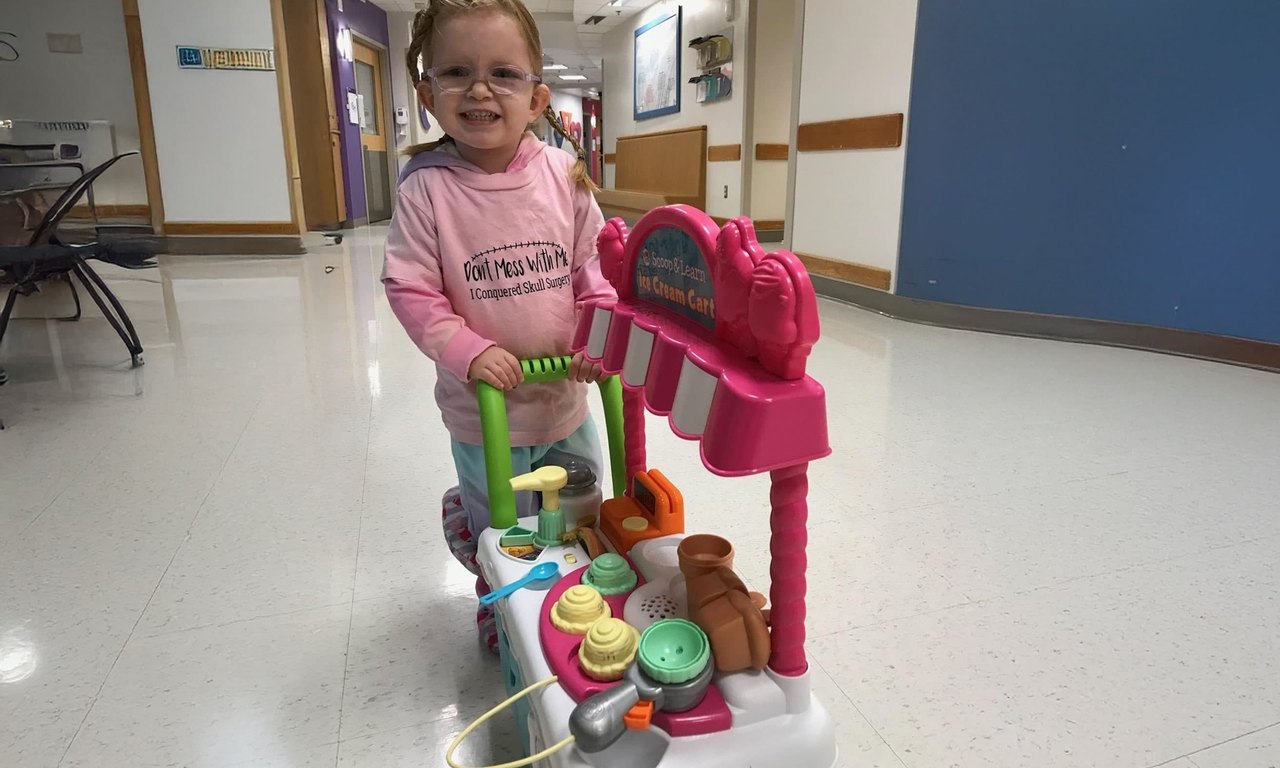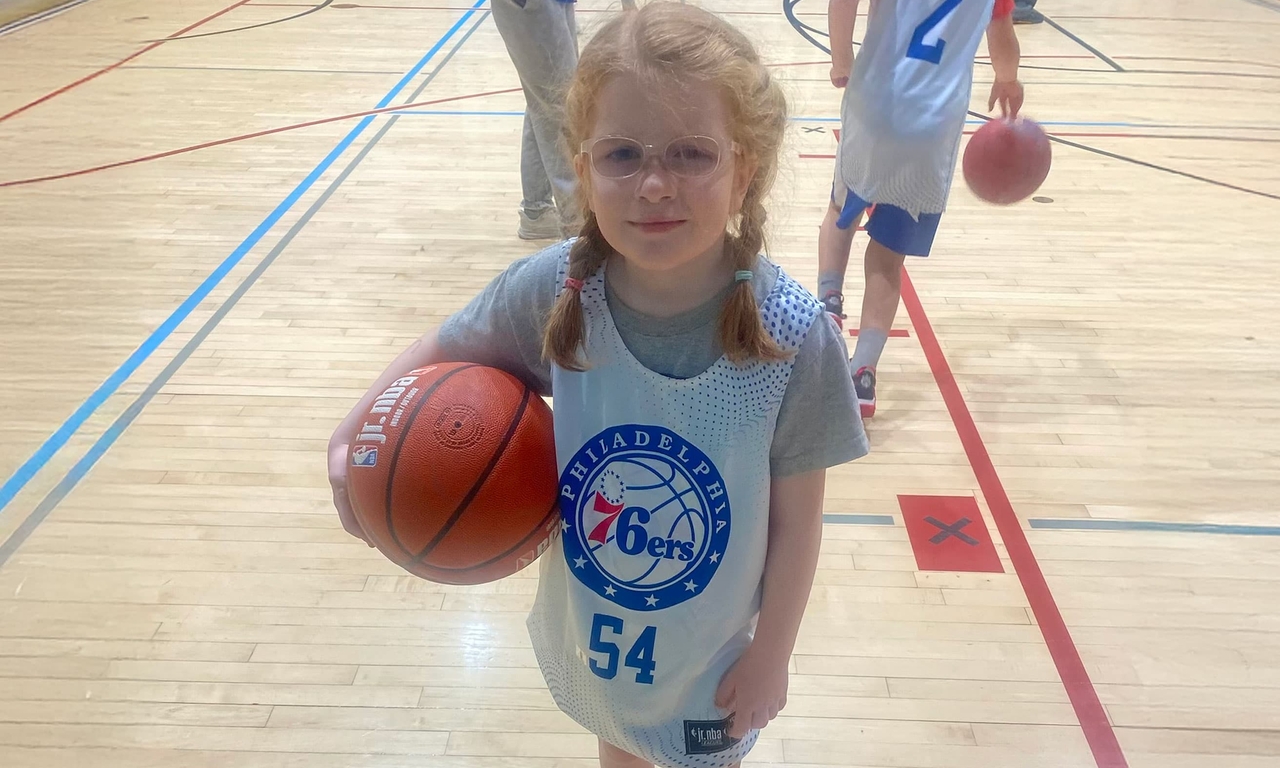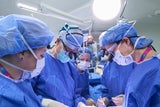Craniosynostosis Diagnosis and Surgery as a Toddler: Charlotte’s Story
Craniosynostosis Diagnosis and Surgery as a Toddler: Charlotte’s Story

Just after Christmas 2018, when Charlotte was 2.5 years old, she stood in the kitchen doorway and said to her mother, Amanda, “Mommy, my head hurts.” It was the beginning of a long journey to a diagnosis of — and then surgery for — a condition of the skull that is usually detected at birth.
Amanda’s pregnancy with Charlotte, who goes by Charlie, was uneventful. The birth, however, was difficult and led to Charlie needing to be admitted to the Newborn/Infant Intensive Care Unit at Children's Hospital of Philadelphia (CHOP). When Amanda and her husband, Chris, brought the baby home, Charlie weighed only 4 pounds, but she grew and developed at a healthy rate. “Charlie's early years seemed typical,” Amanda says, “and for a while, we let ourselves believe that the worst was behind us.”
Charlie’s complaint of a headache changed everything. She had gotten glasses a few months prior, so Amanda took her back to ophthalmologist Emily DeCarlo, MD, who would later join CHOP’s Division of Ophthalmology and thus would continue to care for Charlie. Dr. DeCarlo “didn’t like what she saw and sent us to CHOP,” Amanda recalls.
Charlie had swelling of the optic nerve, an indicator that there could be pressure on her brain. A neurologist and a neuro-ophthalmologist examined her. She was admitted to CHOP several times and underwent multiple tests: spinal taps, CT scans, MRIs. Nothing was conclusive. Charlie’s headaches and vomiting came and went. “It was 14 months of uncertainty, and we had two other kids at home,” says Amanda.
An uncommon diagnosis for a toddler
Then in March 2020, Charlie had a 3D CT scan of her head, which revealed the problem: the seams in her skull had fused early, causing pressure to build up. The condition, called craniosynostosis, is usually detected shortly after birth because the fused seams cause an infant’s head to be misshapen. Charlie’s skull shape had never appeared unusual.
The diagnosis led Charlie to be seen by Scott Bartlett, MD, an attending surgeon in the Division of Plastic, Reconstructive and Oral Surgery and Director of the Craniofacial Program. “Dr. Bartlett and his amazing team put us at ease from the day we met them,” says Amanda. “We were confident that she was in the best of hands.”
Dr. Bartlett performed surgery on Charlie two days after her diagnosis. He removed parts of her skull and inserted metal rods called distractors in the seams. CHOP has been a leader in instituting this procedure. Performing the surgery on a 3.5-year-old is more challenging than on the typical infant with craniosynostosis, because the bones have grown and become harder, but CHOP has expertise in treating children who don’t have a typical medical journey.
Attention to every little detail

“A few days after surgery, when it was time to remove Charlie’s head wrap, we were so nervous about what we’d see,” Amanda recalls. “Our fears were quickly put to rest. Dr. Bartlett’s team had carefully braided Charlie’s long hair to protect the incision. In that moment, we knew they had treated her like their own child. That feeling was indescribable.”
For a month following the surgery, the distractors needed to be turned daily to create a gradual expansion of the bone and soft tissue. “Thankfully my husband took that on,” says Amanda. Then a second surgery removed the distractors, and Charlie now proudly shows off her scar.
Months later, genetic testing revealed a rare mutation that was the likely root cause of the craniosynostosis. Her skull bones might have fused during the first two years of her life instead of in the womb. Following this genetic discovery, Charlie continued to navigate various challenges, but “nothing stops her from loving life and being a real spitfire,” says Amanda.
Throughout her journey, Charlie, now 8, felt right at home at CHOP. She loves seeing Dr. Bartlett and her neuro-ophthalmologist, Robert Avery, DO. At one point, Charlie declared, “I want to buy Dr. Avery a car!” — which Amanda finally realized meant a plastic push car that Dr. Avery’s other young patients can sit in and play with during their appointments. Charlie is so fond of Dr. DeCarlo, she wanted to dress up like her for Halloween.
One of Charlie’s great joys has come from being part of a program called Team IMPACT, which matches children facing serious illness and disability with college sports teams. Charlie has become an honorary member of the University of Pennsylvania’s women’s softball team. She recently joined the Jr. 76ers basketball club, has done a kid's triathlon and has grand ambitions for her future: She wants to grow up to be a doctor, a teacher and an author.

Craniosynostosis Surgery
At Children’s Hospital of Philadelphia, coordinated care of patients with craniosynostosis related to syndromes is managed through the Craniofacial Program, working closely with our colleagues across the institution including Center for Pediatric Airway Disorders, Pediatric Feeding and Swallowing Center, Division of Ophthalmology and more.
Because every patient with craniosynostosis has unique issues, the timing and course of surgical treatment is highly individualized. It is important to see a surgeon with expertise in pediatric plastic, reconstructive and oral surgery who specializes in treating these rare conditions.